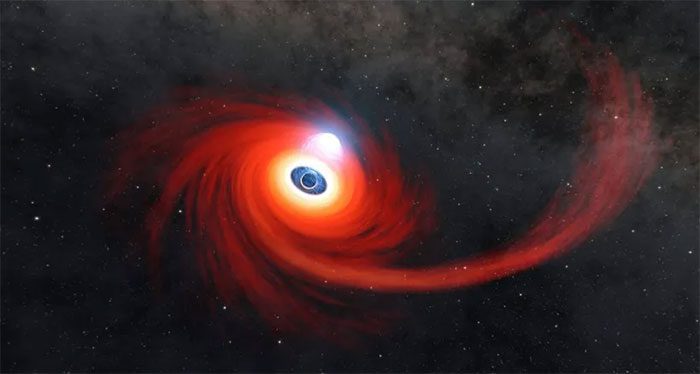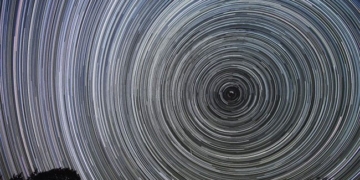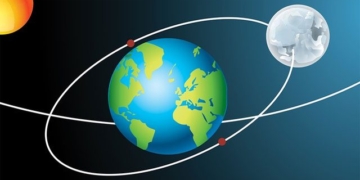A massive black hole has been “spotted” by NASA destroying a nearby star. This black hole is at the center of a galaxy located 250 million light-years from Earth. It is the fifth black hole ever observed consuming a star.
When a star comes too close to a black hole, a tremendous amount of gravitational force pulls the star in, resulting in a tidal disruption event. Once the star is engulfed by the black hole’s gravity, it forms a super-heated light structure around the black hole, which astronomers refer to as a corona.

NASA’s illustration of the corona gas cloud being consumed by a black hole.
Nasa’s NuSTAR satellite is the most sensitive space telescope capable of observing these wavelengths of light.
The destruction of a star, from start to finish, lasts only a few weeks or months. Although relatively brief, this event provides astronomers with valuable insights into how black holes manipulate surrounding matter, while also creating stunning light displays as it unfolds.
Suvi Gezari, an astronomer at the Space Telescope Science Institute, told NASA: “Tidal disruption events are a type of cosmic laboratory. They are a window for us to access real-time feeds from a massive black hole lurking at the center of a galaxy.”
Black holes are surrounded by billions of kilometers of hot gas, which can take hundreds, sometimes thousands of years to form. Currently, modern astronomy knows very little about these gas masses, but it is believed that the gas streams extend and move during the destruction of a star as it orbits around the black hole, colliding with itself.





















































